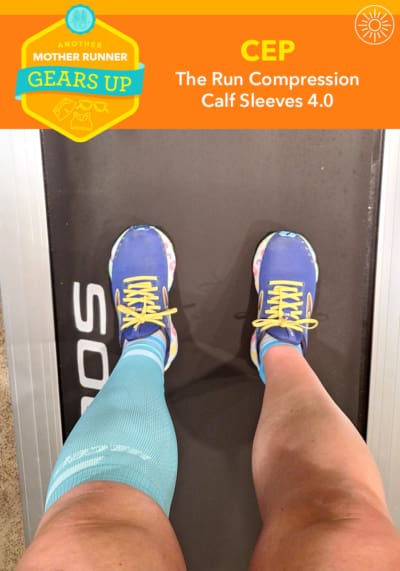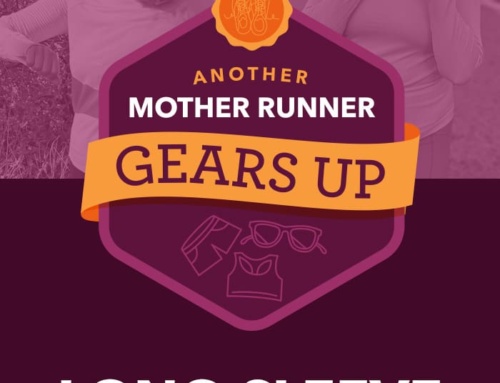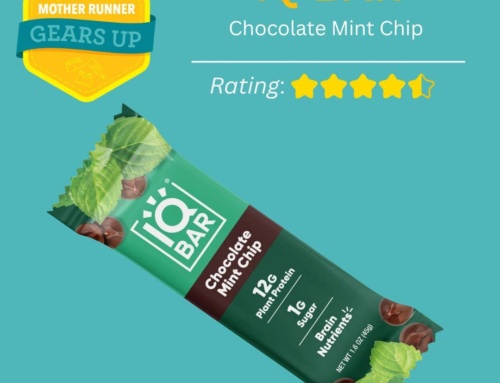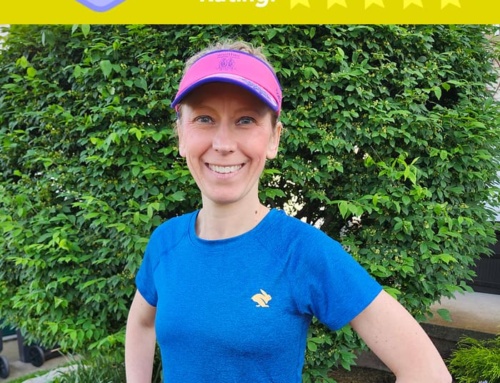
Compression socks and sleeves: They seem to be on the legs of everyone these days, from us mere-mortal runners to Olympians. But hop in the Wayback Machine, and we’d see compression socks and sleeves migrating from the medical world to try-everything-first triathletes, then finally to runners. The main benefit, which has been supported by university research, is improved blood flow, supposedly supplying lower leg muscles with more oxygen and flushing exercise waste products, like lactic acid.
Studies done in New Zealand with runners found mixed results—compression socks didn’t help mid-distance runners (doing 10Ks, for instance), but on longer-distance runs and races, lower-leg compression apparel appears to make an athlete’s legs feel more powerful and less fatigued. Anecdotally, gals also find the gear offers relief for Achilles tendonitis, shin splints, and tight, overworked calves. Plus, come on: These bright beauties boost one’s cool quota.
Some people wear compression gear solely for recovery, while more and more folks seem to be sporting them while working out. It’s a matter of preference, especially at this sweltering time of year.
Stating the obvious here, the difference between socks and sleeves is whether or not your feet are encased in compression. Opt for sleeves if you want to sidestep scrunched toes or to wear your favorite running socks. Compression socks are the better option for folks looking for arch and Achilles support.
We had a cadre of our brand ambassadors put compression socks and sleeves through their paces on training runs. Read on for their feedback, starting with socks.
Feetures Graduated Compression Light Cushion Knee High
Price: $40
Sizes: S-L
These slightly shorter-than-average knee highs are well priced, and offered “the perfect level of compression” for one marathoner-in-training, who felt the height of these socks are best suited for runners who are 5’ 4” or shorter.
“The compression was just what I had hoped for. I wore these socks for three runs between 2 to 2.5 hours, and I felt pretty good throughout from warm-up to cooldown walk—and the next day,” reported a marathon-running tester, who started regularly wearing compression socks during her second pregnancy.
These socks are 85% nylon and 15% Spandex. “The material is really soft and doesn’t feel as harsh as some other compression socks I’ve used in the past,” one tester told us, who appreciated that she had a “fairly easy time getting the socks on.” She also praised these Feetures for feeling “lighter than other compression socks.” She’s spot on: These socks offer 15-20mmHg of compression at the ankle.
In support of socks, one tester wrote, “I like the extra bit of padding it offers on the bottom of my foot.”
CEP The Run Compression Tall Socks 4.0
Price: $59.95
Sizes: II, III, IV
Runners looking for compression socks to go with every ensemble can stop right here: These two-tone CEPs are available in 10 color combos! Both our testers “loved” the looks of these socks: “The bright blue color stands out, and it’s a very happy color.”
One tester, however, wished the socks were “a bit tighter at least in the lower portion of the sock to add more support for my sometimes achy Achilles.” To each her own: Our other tester found the compression spot-on. “I enjoyed the cozy snug fit of these socks without them feeling tight or that they were compressing too much,” wrote a marathoner who wore these on 10- to 12-mile runs. Quantifiably, these socks are rated 20-30mmHg.
These socks come in a Left and a Right, letting the wearer align each sock’s extra padding to align with the Achilles tendon.
A nice bonus: These socks are made from fibers treated with silver to reduce unpleasant odors and eliminate bacteria. (Read: To keep ‘em from getting stinky!)
Vim & Vigr 20-30 mmHg Open Toe Sock
Price: $44 (on sale for $33)
Sizes: S/M-L/XL in regular + wide calf
Don’t be fooled by the cute patterns: This brand’s compression legwear was developed in partnership with vascular surgeons and vein clinics.
The fabric of these cuties is unique, too: 48% cotton, 42% nylon, and 10% latex-free Spandex. The words on the street from our tester who is chasing a 50-state marathon goal wrote, “The material for these is a little different from what I’m used to for compression socks, but it did the job. My legs felt good while I was running, and they were very supportive but not too tight.”
Another point of differentiation: With a unique open-toe design, these compression items are like a sock/sleeve hybrid. Online, customer photos show these paired with flip-flops, while our tester opted instead to pull them on (easily!) over her favorite running socks. No worries about overheating. “The fabric was light and cool—it breathed nicely.”
With the brand’s sizing, it’s nice to have options for runners with wider calves.
GO Sleeves GO Kinesiology + Compression Calf Sleeves
Price: $99.95 (psst, use code AMR25 to save $25)
Size: S-XXL
Don’t let the “slightly hefty” price tag deter you: These unique sleeves deliver. One tester, a long-time sufferer of shin splints who had previously worn sleeves from Amazon, raved, “You get what you pay for!! These are a little pricier than other models, but I will never go back to my cheaper low-frills pair because they cannot match the quick relief I felt after wearing the GO Sleeves.” (And the brand offers a 45-day trial, money-back guarantee.)
What makes them special: These are the only 2-in-1 sleeves that combine the power of kinesiology tape with compression sleeves, with strategically placed, permanent strips on the inside of them. These sleeves felt so good, one tester slept in them after a tough, long run that left her with aching Achilles tendons and calves. “As soon as I put them on, I felt noticeable relief.” She also appreciated the wide-yet-flexible band around the ankles, writing, “They were pleasantly comfortable around my ankles, which is normally where other sleeves roll up and/or pinch, leaving my ankles swollen. Not the case in the GO Sleeves.”
A tester, who is in her third trimester of pregnancy and still running, noticed “a faster recovery time and less soreness” in her legs after wearing the GO Sleeves. Another tester with self-described, “meaty calves,” appreciated the “great, comfortable fit” of these sleeves.
The shin-splint tester raved, “After wearing them in the late afternoons and evenings, my morning 6-mile runs were bouncy and smooth!”
CEP The Run Compression Calf Sleeves 4.0
Price: $44.95
Sizes: II, III, IV
Our tester had long been on the hunt for the perfect calf sleeves—and these CEPs are it for her! With a compression level of 16-18 mmHg on the calf muscle and 22-24 mmHg around the ankle, “the compression felt ‘just right,’” commented the Chicago-Marathoner-in-training, writing her calves “felt supported, but not pinched or sucked in.”
These sleeves are made of 77% Polyamide and 23% Spandex. A special technology adapts to weather conditions so the wearer can stay cool and dry in warmer weather, but warm and comfortable in cooler weather. Our gal wore these sleeves on all her runs, then for about an hour post-workout while she ate and stretched. “They never felt sweaty, itchy, or uncomfortable—either during the run or after.” She also told us they held up well after multiple washes. “These are keepers.”
Like with the CEP socks (above), there are numerous (7) shades to choose from. “The color choices are super fun!”











Leave A Comment
You must be logged in to post a comment.